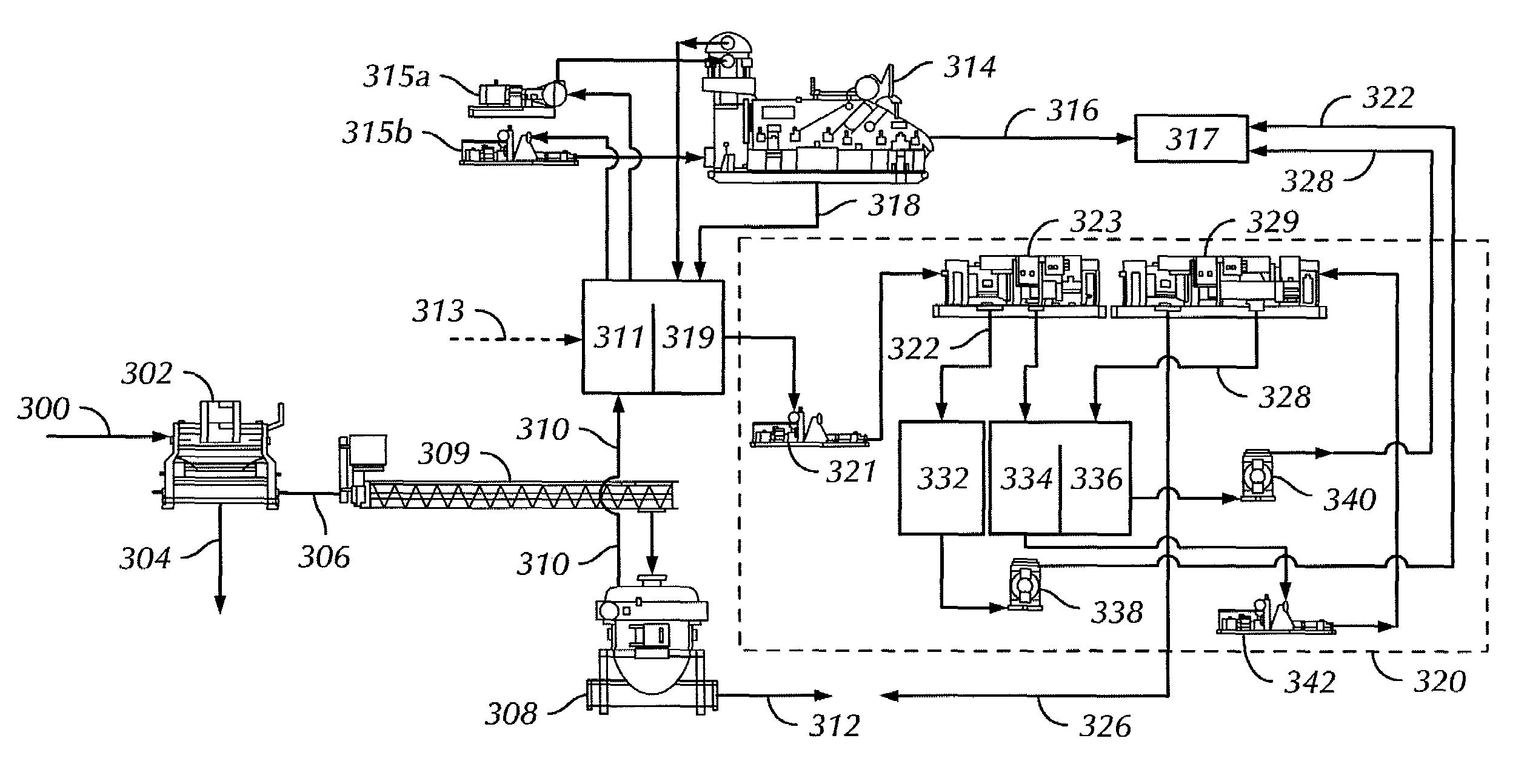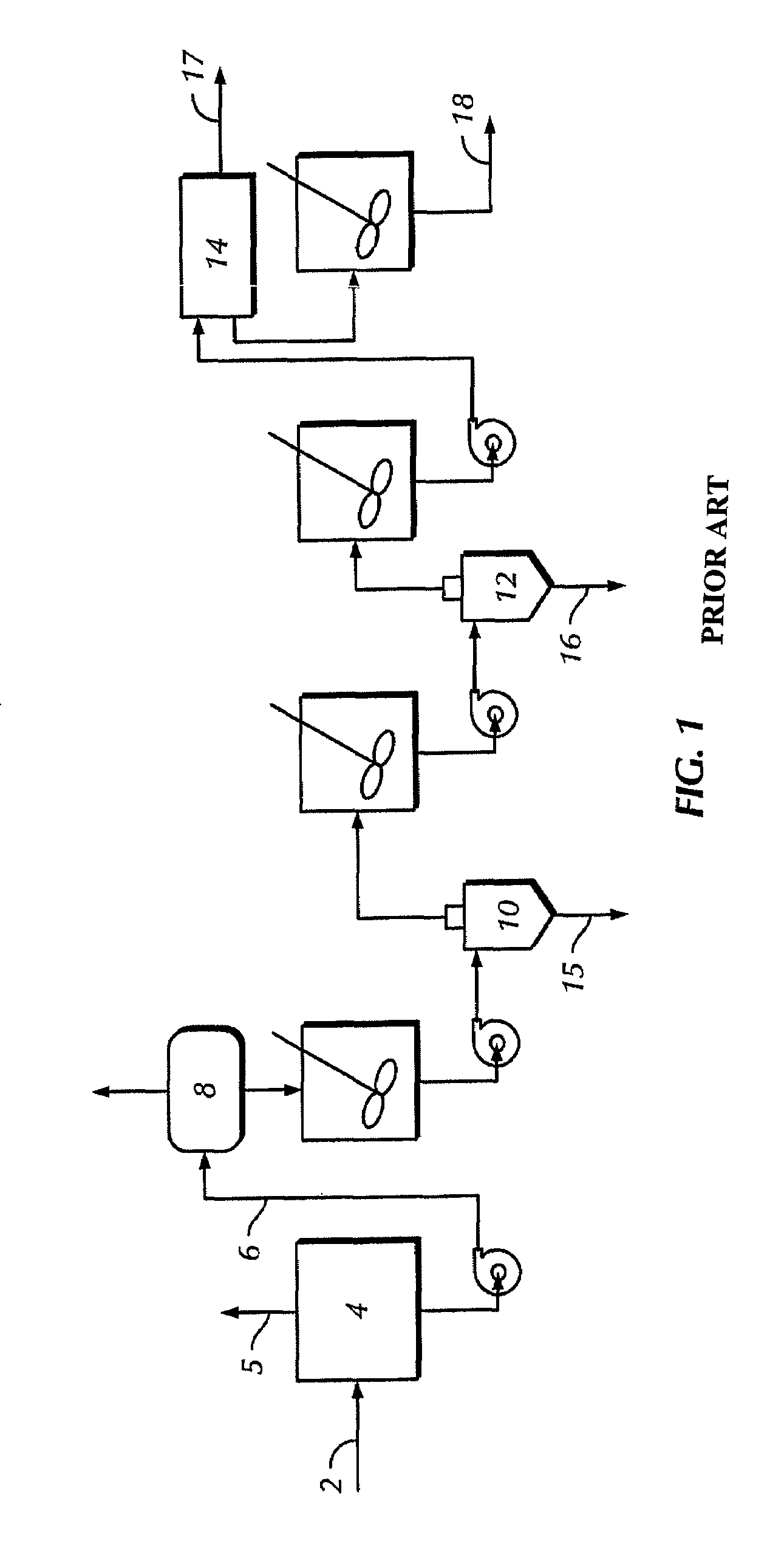Recovery system
a recovery system and drilling fluid technology, applied in the field of drilling fluids, can solve the problems of mud formulations that must be adjusted often, small drilled solids which can accumulate in the drilling fluid, and loss during the drilling process
- Summary
- Abstract
- Description
- Claims
- Application Information
AI Technical Summary
Benefits of technology
Problems solved by technology
Method used
Image
Examples
examples
[0088]Samples from two different drilling operations were collected and analyzed to determine where in the process the industrial carbon was being discarded. Although these samples reflect only one or two types of strata encountered during drilling, the analyses of the samples indicate that a size or density separation may be used to sufficiently isolate the industrial carbon for recycle to an active mud system.
[0089]Sample 1: Industrial carbon (G-SEAL®, available from M-I LLC, Houston, Tex.; average particle size of 450 microns, particle diameters ranging from 200-600 microns) was used as an additive in drilling mud during drilling operations. During mud cleaning operations, drilling mud containing drill cuttings and industrial carbon was separated, using shakers having sequentially larger mesh sizes as shown in Table 1. The drilling mud Sample 1 was initially separated in 10 and 40 mesh shakers. The effluent from the 40 mesh shaker was then separated in parallel across screens ran...
PUM
 Login to View More
Login to View More Abstract
Description
Claims
Application Information
 Login to View More
Login to View More - R&D
- Intellectual Property
- Life Sciences
- Materials
- Tech Scout
- Unparalleled Data Quality
- Higher Quality Content
- 60% Fewer Hallucinations
Browse by: Latest US Patents, China's latest patents, Technical Efficacy Thesaurus, Application Domain, Technology Topic, Popular Technical Reports.
© 2025 PatSnap. All rights reserved.Legal|Privacy policy|Modern Slavery Act Transparency Statement|Sitemap|About US| Contact US: help@patsnap.com



